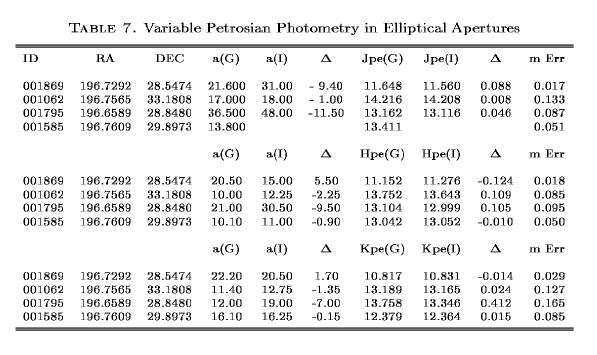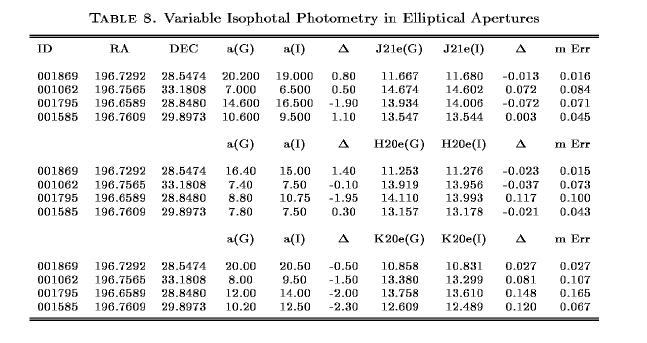Variable Elliptical Apertures: The Petrosian and Isophotal Photometry
Tables 7 and 8 show the comparison of the results of petrosian and isophotal photometry when the galaxy centers, ellipticities, and position angles are allowed to vary from the GALWORKS values as discussed in the previous section. The results indicate that for the petrosian photometry you can get very different answers depending on how you do the photometry. Table 7 indicates that for most of the galaxies the differences are typically <10%, for galaxy 1795 the difference is 40% at K (the signal-to-noise is also very poor at K). We expect the results to be particularly divergent for galaxies with distorted profiles.


The isophotal photometry appears to be more promising than the petrosian. The differences in the isophotal photometry seem to be a couple percent except for 1795 in all bands, and the very faint galaxy 1062 at J. As with all of this, it is hard to elaborate from a sample of four, but this seems to indicate that the isophotal photometry is stable at the few percent level for galaxies that are not near the limiting magnitude or are very distorted (as an internal comparison of IRAF versus GALWORKS).
Tom Jarrett
Thu Feb 6 16:44:06 PST 1997


